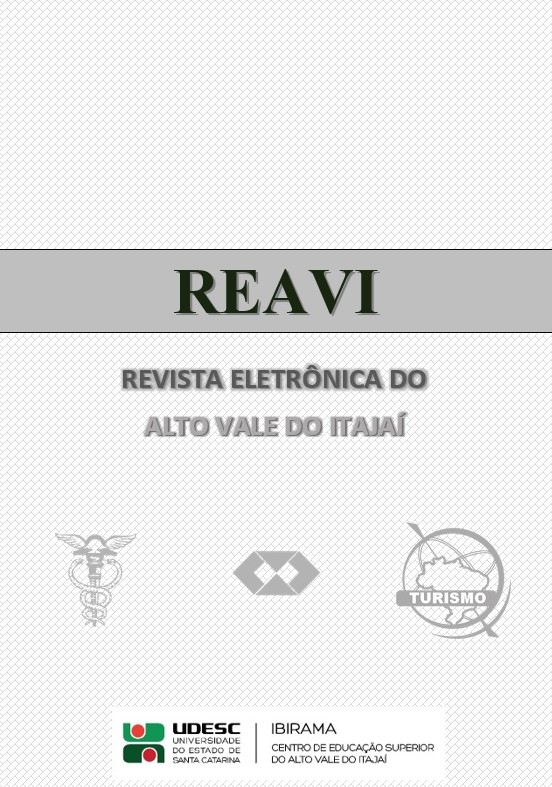Uma análise sobre o papel do governo chinês nos parques científicos e tecnológicos (zonas de alta tecnologia) na China
DOI:
https://doi.org/10.5965/2316419008112019084Palavras-chave:
China, Parques, Política, Governo, InovaçãoResumo
A China é um país que cresceu rapidamente nas últimas décadas e sua realidade ainda é pouco compreendida no ocidente. Dessa maneira, o modo de atuação governamental nesse crescimento orientado a ciência, tecnologia e inovação merece a atenção, principalmente, de países emergentes. Portanto, o presente estudo tem como objetivo analisar o papel do governo nos parques científicos e tecnológicos chineses. Para tanto, foi realizada uma revisão da literatura na base de dados Scopus. A partir do protocolo de seleção, foram filtrados 12 artigos que serviram de base para nossa análise. Os resultados demonstram que o governo Chinês exerce forte influência sobre o desenvolvimento dos parques no país. Uma vez que, a partir da década de 80, promoveu fortemente políticas para criação de parques tecnológicos, principalmente, por meio do programa Torch. Atualmente, essa política orientada a inovação é estudada por diversos autores que buscam uma melhor compreensão do sistema de inovação chinês.
Downloads
Referências
ANPROTEC.Parques Tecnológicos Consolidados.2019. Disponível em: <http://anprotec.org.br/site/lideres-tematicos/parques-consolidados>. Acesso em: 05 nov. 2019.
CCP. THE 13TH FIVE-YEAR PLAN FOR ECONOMIC ANDSOCIAL DEVELOPMENT OF THE PEOPLE’S REPUBLIC OF CHINA, (2016–2020). 2016. Disponível em: <http://www.gov.cn/xinwen/2016-03/17/content_5054992.htm>. Acesso em: 29 jul. 2019.
CHEN, Chuchu; LINK, Albert N. Employment in China’s hi-tech zones.International Entrepreneurship and Management Journal,p. 697-703, 2018. http://dx.doi.org/10.1007/s11365-017-0486-z
CHENG, Fangfang; VAN OORT, Frank G.; GEERTMAN, Stan; HOOIMEIJER, Pieter. Science Parks and the Co-location of High-tech Small-and Medium-sized Firms in China’s Shenzhen.Urban Studies.S.I., p. 1073-1089, 2013. https://doi.org/10.1177/0042098013493020
CTP. National-level independent innovation demonstration zone list. 2018. Disponível em: <http://www.ctp.gov.cn/gxq/zzcx/201803/e83727ff76ea44fdaa26a4eb2b288dd5.shtml>. Acesso em: 27 jul. 2019.
GAO, Xiaopei; SONG, Wei; PENG, Xiaobao. National Innovation Demonstration Zones Leading China's Regional Development. Modern Economy, p. 1056-1063, 2015.
GUO, Yu; VERDINI, Giulio. The role of geographical proximity in the establishment and development of science parks –evidence from Nanjing, China.Asian Geographer,S.I., p. 117-133, 2015. https://doi.org/10.1080/10225706.2015.1079726
HAOUR, Georges; JOLLY, Dominique. China: the next innovation hot spot for the world.Journal of Business Strategy,p. 2-8, 2014. https://doi.org/10.1108/JBS-05-2013-0037
HOBBS, Kelsi G.; LINK, Albert N.; SCOTT, John T.. Science and technology parks: an annotated and analytical literature review.The Journal of Technology Transfer,p. 957-976, 2017. https://doi.org/10.1007/s10961-016-9522-3I
ASP. Definitions. Disponível em: <https://www.iasp.ws/our-industry/definitions>. Acesso em: 06 nov. 2019.
JONGWANICH, Juthathip; KOHPAIBOON, Archanun; YANG, Chih-hai. Science park, triple helix, and regional innovative capacity: province-level evidence from China. Journal of the Asia Pacific Economy.S.I., p. 333-352, 2014. https://doi.org/10.1080/13547860.2014.880285
KOSTER, Hans RA; CHENG, FangFang; GERRITSE, Michiel; VAN OORT, Frank G.. Place‐based policies, firm productivity, and displacement effects: Evidence from Shenzhen, China.Journal of Regional Science, v. 59, n. 2, p. 187-213, 2018.https://doi.org/10.1111/jors.12415
LIU, Yipeng; WOYWODE, Michael; XING, Yijun. High technology start-up innovation and the role of guanxi: an explorative study in China from an institutional perspective.Prometheus,p. 211-229, 2012. https://doi.org/10.1080/08109028.2012.661558
MARCONI, Marina de Andrade; LAKATOS, Eva Maria.Metodologia Científica.7. ed. S.i: Atlas, 2017. 390 p.
MIAO, Julie Tian; HALL, Peter. Optical illusion? The growth and development of the Optics Valley of China.Environment and PlanningC: Government and Policy, v. 32, n. 5, p. 863-879, 2014.http://dx.doi.org/10.1068/c1270r
MOTOHASHI, Kazuyuki. The role of the science park in innovation performance of start-up firms: an empirical analysis of Tsinghua Science Park in Beijing.Asia Pacific Business Review, v. 19, n. 4, p. 578-599, 2013. https://doi.org/10.1080/13602381.2012.673841
UKSPA (United Kingdom). About UKSPA. Disponível em: <http://www.ukspa.org.uk/ourassociation/about-us>. Acesso em: 06 nov. 2019.
XIE, Kefan et al. Technological entrepreneurship in science parks: A case study of Wuhan Donghu High-Tech Zone.Technological Forecasting and Social Change.S.i., p. 135-156. 01 out. 2018. http://dx.doi.org/10.1016/j.techfore.2018.01.021
YANG, Chih-hai; LEE, Chia-min; LIN, Chun-hung A..Why does regional innovative capability vary so substantially in China? The role of regional innovation systems.Asian Journal of Technology Innovation,p. 239-255, 2012.
ZOU, Yonghua; ZHAO, Wanxia. Anatomy of Tsinghua University Science Park in China: institutional evolution and assessment.The Journal of Technology Transfer.S.I., p. 663-674, 2014. https://doi.org/10.1007/s10961-013-9314-y
Downloads
Publicado
Como Citar
Edição
Seção
Licença
Copyright (c) 2019 REAVI - Revista Eletrônica do Alto Vale do Itajaí

Este trabalho está licenciado sob uma licença Creative Commons Attribution 4.0 International License.














